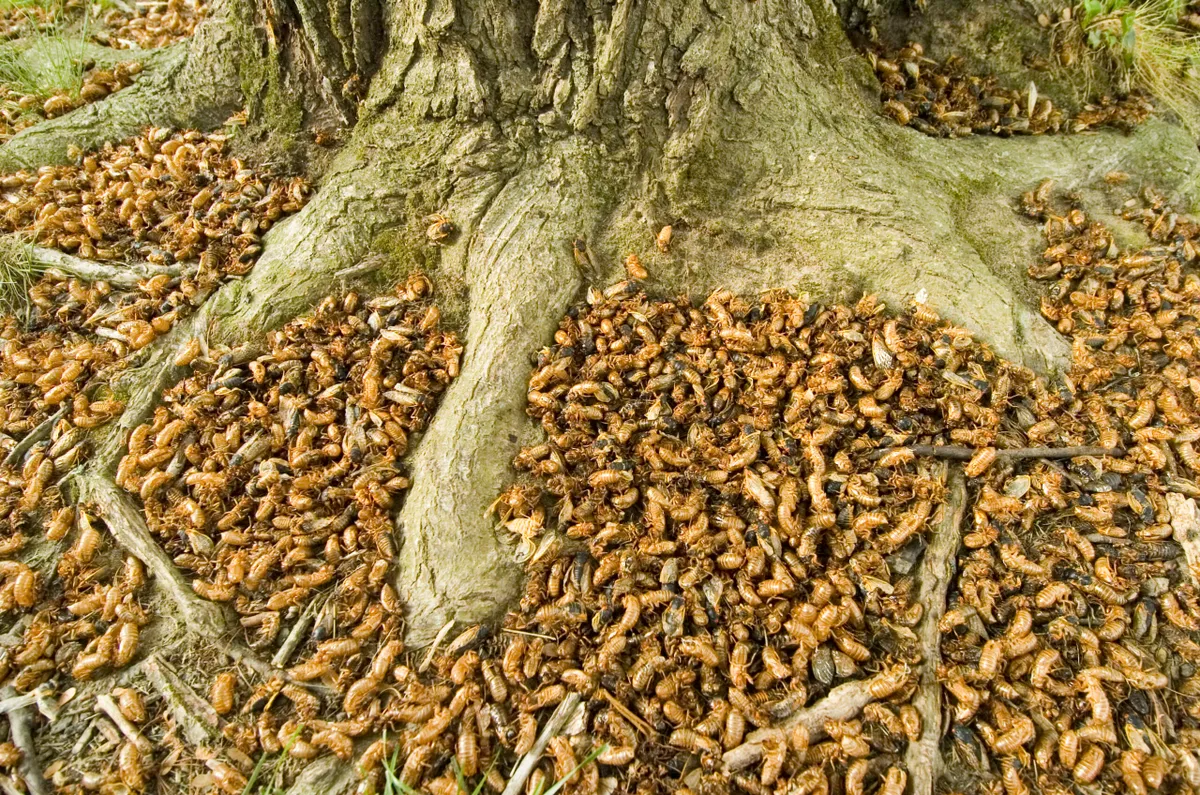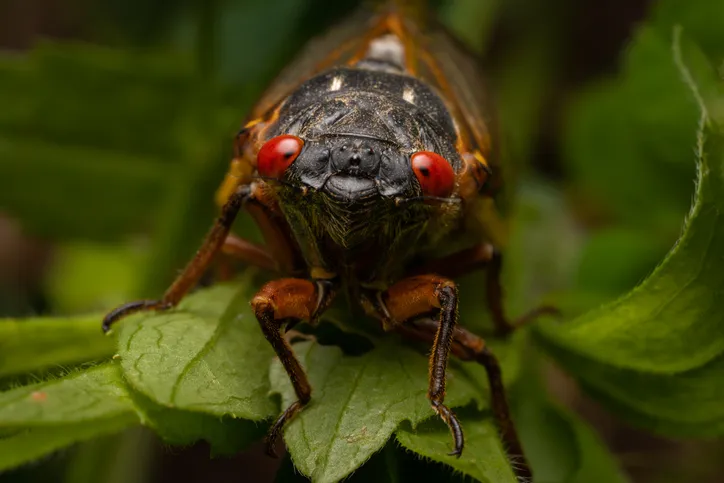Like buses, you don’t see one for years and then trillions of them appear at once. And when they do finally show up, the periodical cicadas of North America – larger, noisier relatives of the planthoppers – radically alter the ecology of their forest habitat, according to scientists.
These periodical cicadas come in two varieties – one has a 17-year life-cycle; the other a 13-year one. Both spend the vast majority of their lives as nymphs below ground, sucking sap from tree roots. But when their time is up, they emerge above ground en masse and moult into winged adults. They mate and lay eggs, swamping predators through sheer weight of numbers.
“Cicadas present us with a natural experiment to see what happens when you throw a few billion tasty morsels into a forest,” says John Lill, Professor of Biology at The George Washington University.
During the mass emergence in 2021 of the 17-year cicadas of the eastern United States, Lill and his colleagues studied the responses of local bird populations. In a 2023 report published in the journal Science, the team revealed that 82 species of bird, including normally herbivorous species such as swans, feasted on the cicadas. “Even some ornithologists, who know a lot more than I do about birds, said ‘oh no, those species won’t eat cicadas.’ And guess what, they did eat cicadas,” says Lill, who specialises in ecology and evolution of plant-herbivore interactions.
Like buses, you don’t see one for years and then billions of them appear at once.

But the emergence had wider ecological ramifications than that. Insectivorous birds, distracted by the all-you-can-eat cicada buffet, ignored the caterpillars and other leaf-munching insects that they would normally be plucking from the trees. This, in turn, led to trees losing twice as much foliage compared to a normal year.
The team is now preparing for another emergence event in the spring of 2024 in much of the mid-western and eastern United States – including Missouri, South Carolina, Illinois and Alabama – where 17- and 13-year cicadas are due to emerge at the same time, something that last occurred in 1803.
“They’re going to meet each other for the first time in a couple of centuries,” says Lill. “Who knows what will happen? Maybe they’ll hybridise. Every biologist interested in cicadas will be there. It’s very exciting.”
Experts are quick to remind people that the cicadas are not harmful to people or pets, and that the mass emergence is a natural wonder. Some insect enthusiasts are even planning trips to go and see the wildlife spectacle.

You may also like: